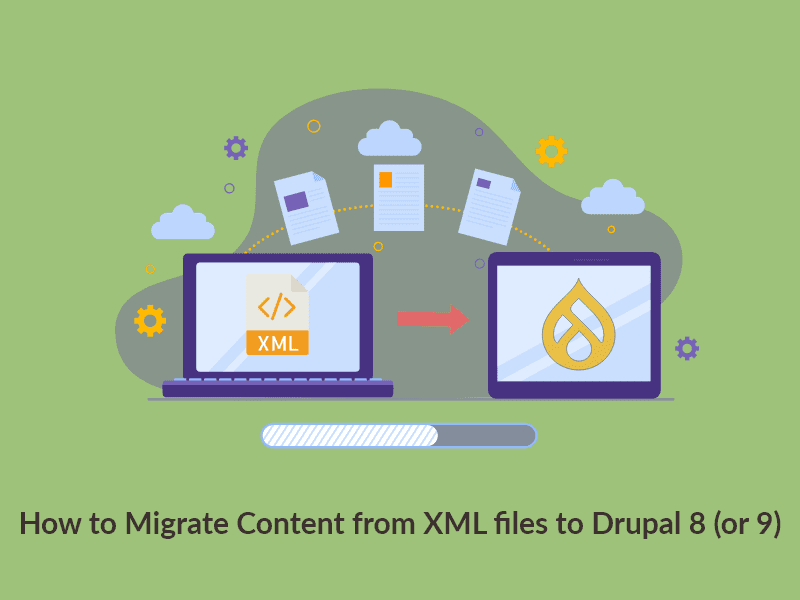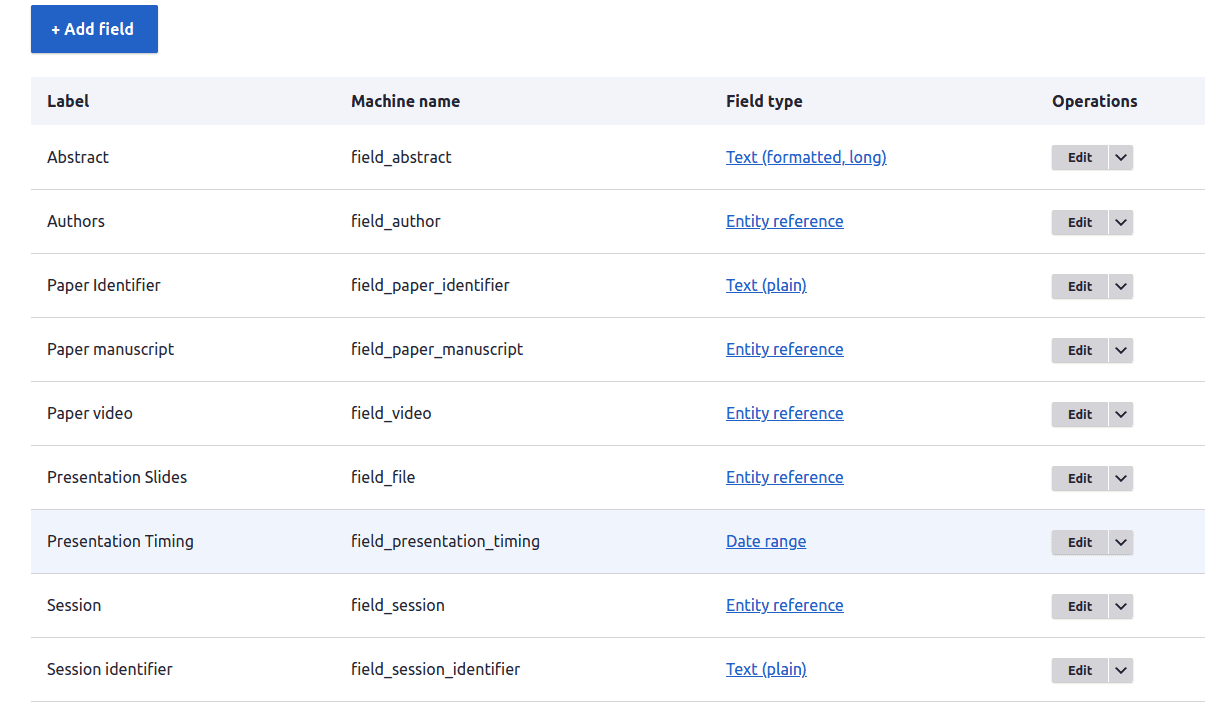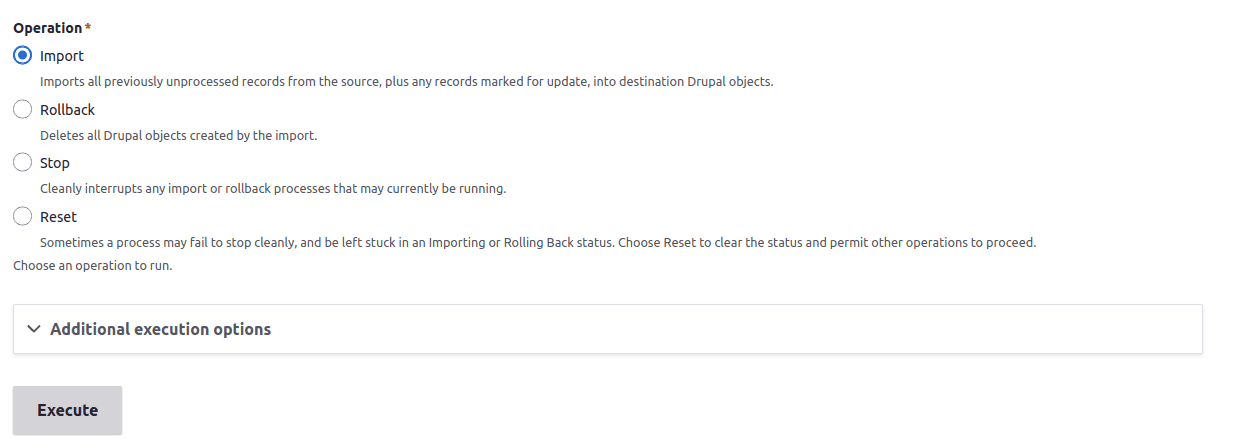Pulling data from different sources to your Drupal CMS is what migration is all about. Your migration source can be anything – a database, another CMS, CSV, XML files. Drupal always gives you the flexibility to migrate data from anywhere into the CMS. We have written extensively on Drupal migrations before like migrating from a database source, migrating multilingual content from CSV, from an SQL source, a complete how-to-guide to migrations and more! If you are looking for a guide to migrating data from XML files to Drupal 8 or Drupal 9, you have arrived at the right place as that is what we are going to discuss about here!
If you’re looking to import external feeds to your Drupal 9 website using the Drupal Feeds module, check out this article.

Drupal 8/9 Migration Modules
Here, we will be using the whole set of Drupal migrate modules
After installing these modules, you will need to create a custom module where you will write the script for migration. So first, create a custom module and then create an info.yml which will include the module’s details. Next, enable the module.
name: test migration
type: module
description: Migrating data from the csv files.
core_version_requirement: ^8 || ^9
package: Migration
dependencies:
- drupal:migrate_source_csv
- drupal:migrate_plus
- drupal:migrate_tools
config_devel:
install:
- migrate_plus.migration_group.test_migration
- migrate_plus.migration.test_migration_sessions
- migrate_plus.migration.test_migration_paper
- migrate_plus.migration.test_migration_userOnce the info.yml file is created, you need to create a migration group for this migration. You will need to create this migration group in the path: test_migration> config > install. These details are needed while running the migration:
id: test_migration
label: test Migration
description: Migrating xml data After creating the migration group, install this group in your info.yml file.
config_devel:
install:
- migrate_plus.migration_group.test_migration Now, you need to write a migration script for the content type. This script should be inside config > install and file name should be migrate_plus.migration.test_migration_paper.yml
id: test_migration_paper
label: 'Migrate Paper data from the xml file'
migration_group: test_migration
source:
plugin: url
# Full path to the file.
data_fetcher_plugin: file
data_parser_plugin: xml
urls: private://xml/session.xml
item_selector: /program/session/papers/paper
fields:
- name: title
lable: 'Paper title'
selector: papertitle
- name: abstract
lable: 'Paper abstract'
selector: abstract
- name: first_name
label: 'Author first name'
selector: authors/author/name/givenname
- name: last_name
label: 'Author last name'
selector: authors/author/name/surname
- name: paper_id
label: 'Paper identifier'
selector: paperid
- name: session_id
label: 'Session identifier'
selector: sessionid
- name: start_time
label: 'Paper presentation start time'
selector: starttime
- name: end_time
label: 'Paper presentation end time'
selector: endtime
- name: author_name
label: 'Author name'
selector: authors/author/name/fullname
- name: session
lable: 'Session name'
selector: session
ids:
session_id:
type: string
process:
# Adding the mapping between the fields and the csv columns.
title:
- plugin: skip_on_empty
method: process
source: title
field_abstract/value: abstract
field_abstract/format:
plugin: default_value
default_value: "full_html"
field_presentation_timing/value:
plugin: format_date
from_format: 'Y-m-d\TH:i:s'
to_format: 'Y-m-d\TH:i:s'
source: start_time
field_presentation_timing/end_value:
plugin: format_date
from_format: 'Y-m-d\TH:i:s'
to_format: 'Y-m-d\TH:i:s'
source: end_time
field_paper_identifier: paper_id
field_session_identifier: session_id
field_author:
- plugin: skip_on_empty
method: process
source: author_name
- plugin: paper_user_migration_import_process
no_stub: true
field_session:
- plugin: skip_on_empty
method: process
source: session
- plugin: node_migration_import_process
no_stub: true
destination:
plugin: 'entity:node'
default_bundle: paper
migration_dependencies:
required: { }
dependencies: { }
- id: Will be unique for each yaml file and displayed in the migration list.
- label: Will contain description for the migration.
- migration_group: This is the main group that contains all the migrations.
- source: Will contains all source details for this migration.
- urls: Will contain the file for migration. In the above code, source is placed inside the private directory.
- item_selector: Item selector is the path from which the entire set of data is taken. Basically inside this tag there should be one set of data.
- fields: Here we are assigning tag values to some variables.
- name: Which gives variable names.
- label: A short description.
- selector: In which we are telling which tag value should be assigned to the variable.
- ids: Which should be unique for each content.
- process: In which we are mapping variable and field machine names.
- destination: In which we are mentioning the entity name to which data should be migrated.
Based on your data you can now write plugins for migration as well. The above code plugin is written for the field_author field.
After this go to Structure, there you will see Migration - click on that. You can now see all the migration groups.

Click on List migration. There you can see the list of migration yaml we have created.

Click on the Execute button. You can see the migrating options.

Here you can run any option you want:
- Import: This will migrate the data.
- Rollback: Will roll back all migrated data.
- Stop: Will stop the migration in the middle of the process.
- Reset: Will change the status to an idle state.
You can also migrate the contents through the terminal with these drush commands.
- drush ms - Migration status
- drush mim <migration_id> - Migration import
- drush mr <migration_id> - Migration rollback
- drush mrs <migration_id> - To make migration status idle.
A migration to Drupal 8 or Drupal 9 will need you to move data from a source to the CMS. In this article, we have discussed about migrating data to Drupal from an XML source file. Drupal migrations on your mind? We would love to answer all your questions on migrating to Drupal. Talk to our Drupal experts today!



